The recommended tire pressure for a Hyundai Elantra is 33 pounds per square inch (PSI) for both front and rear tires. However, recommended tire pressure can vary slightly depending on vehicle age and trim level.
Your car’s tires are critical components in your steering system, enabling you to maintain traction on the road and navigate safely from place to place. But when your tires lack air—or if they’re incorrectly inflated—your whole vehicle is thrown off track.
Incorrectly inflated tires can lead to decreased fuel efficiency, trouble steering, and an increase in your risk of a blowout. That’s why it’s important to know the proper air pressure for your vehicle’s tires before hitting the road.
If you’re not sure how to track down the correct tire pressure in your car, don’t worry—
car insurance
super app
Jerry
is here with the stats on proper tire pressure for the Hyundai Elantra. In this article, we’ll help you find the psi you need for your model, show you how to reset your tire pressure monitoring system, and uncover paths to lower your
Hyundai car insurance costs
along the way.
What is the right tire pressure for a Hyundai Elantra?
In most cases, the recommended tire pressure for a Hyundai Elantra is 33 psi on all four tires. But your tire pressure recommendations may vary depending on your OEM wheel size and vehicle trim level.
For example, in the Hyundai Elantra Limited, the recommended tire pressure for models with 15-inch OEM wheels is 30 psi on all tires—but in versions with 17-inch OEM wheel size, the recommended tire pressure becomes 34 psi for the front tires and 33 psi for the rear tires. Similarly, the recommended tire pressure for the
Hyundai Elantra SE
and
SEL
ranges from 32 to 36 psi depending on the wheels you choose.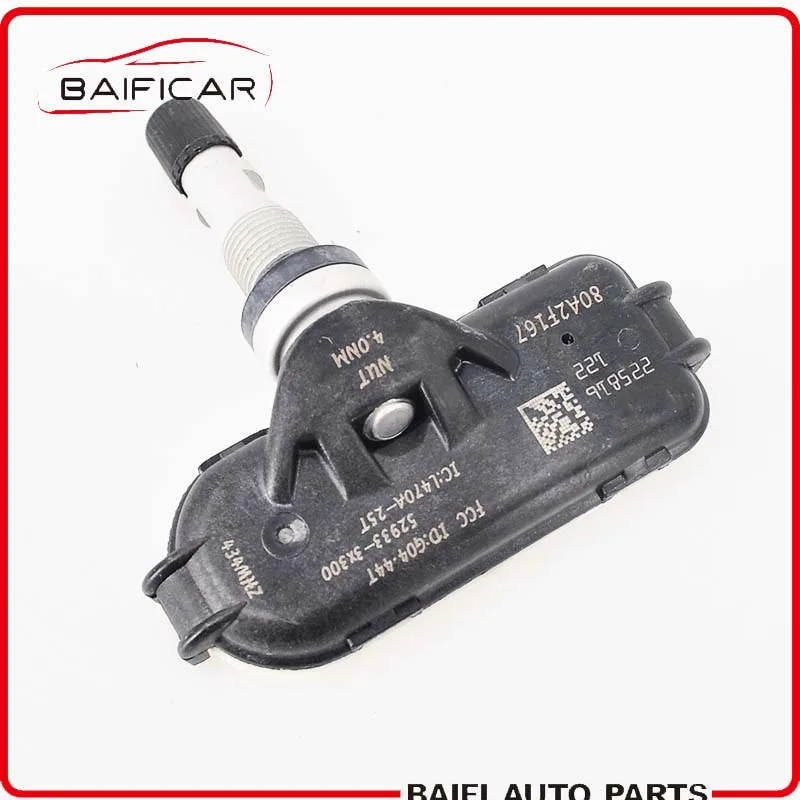
The table below takes a closer look at recommended tire pressure based on the Elantra you drive:
Trim level | Front tire pressure | Rear tire pressure |
|---|---|---|
Hyundai Elantra Blue | 32 psi | 32 psi |
Hyundai Elantra Blue Hybrid | 34 psi | 31 psi |
Hyundai Elantra Eco | 36 psi | 36 psi |
Hyundai Elantra GS | 32-33 psi | 32-33 psi |
Hyundai Elantra GLS | 30-32 psi | 30-32 psi |
Hyundai Elantra GT | 30 psi | 30 psi |
Hyundai Elantra Limited Hybrid | 34 psi | 31 psi |
Hyundai Elantra N Line | 33 psi | 33 psi |
Hyundai Elantra Sport | 33 psi | 33 psi |
Hyundai Elantra Touring | 32 psi | 32 psi |
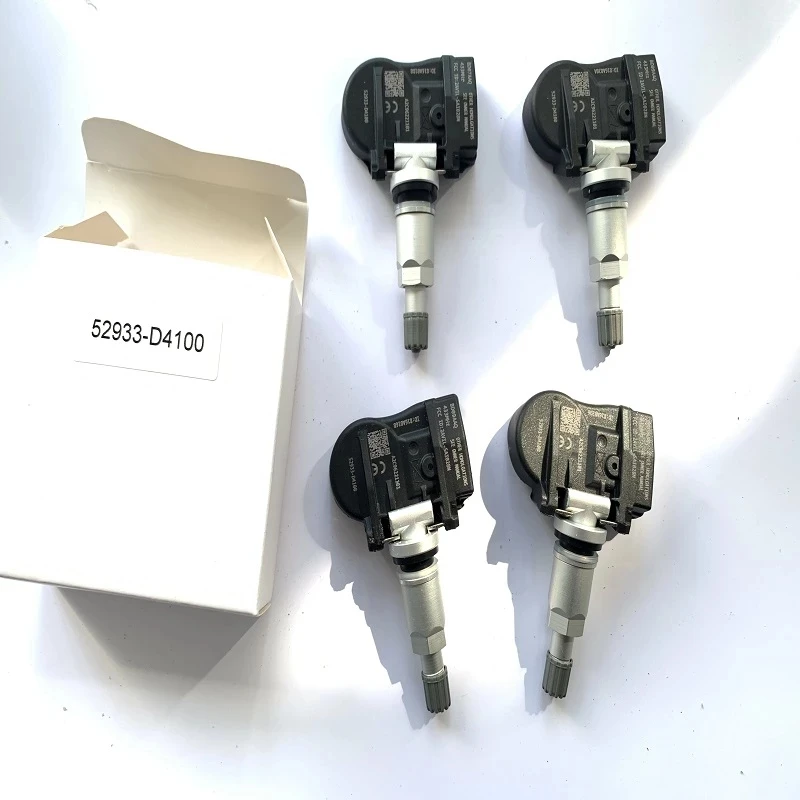
ZIP Code
ZIP Code
Find Savings!
No long forms. No spam calls. Free Quotes.
4.7/5 App Store Rating, 8,100+ Reviews
Trusted by 1.5+ Million Customers.
You can always confirm your specific Elantra’s proper tire pressure by checking your owner’s manual. If you ever choose to upgrade your Elantra to a bigger set of wheels and tires, make sure to check the tire pressure specifications for your new setup.
Hyundai Elantra tire pressure recommendations by tire size
Vehicle | Front tire pressure | Rear tire pressure |
|---|---|---|
2022 Hyunda Tuscon | 35 psi | 35 psi |
2022 Hyundai Sonata | 34 psi | 34 psi |
2022 Hyundai Accent | 33 psi | 33 psi |
2022 Hyundai Palisade | 35 psi | 35 psi |
2022 Hyundai Ioniq | 36 psi | 36 psi |
How to check Hyundai Elantra tire pressure
Maybe you’ve never had to check your Hyundai Elantra’s tire pressure before.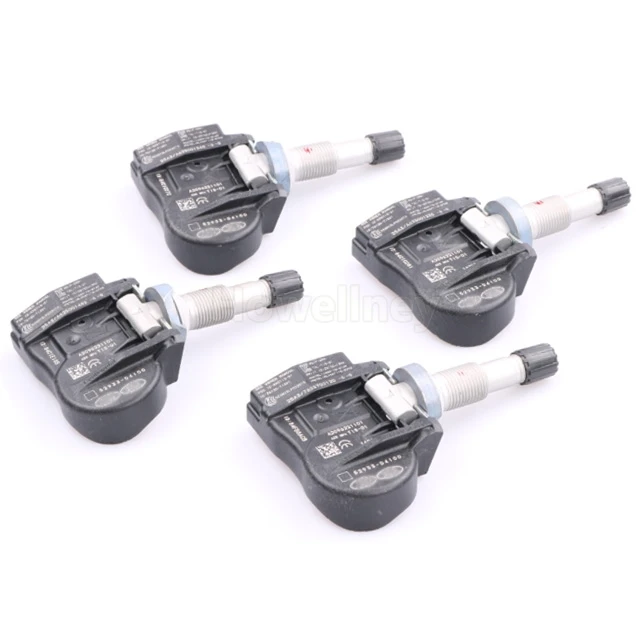 (We’ve all been there). If that’s the case, don’t worry—checking on your Elantra’s tire pressure is easy, thanks to the built-in tire pressure monitoring system on your Instrument Cluster.
(We’ve all been there). If that’s the case, don’t worry—checking on your Elantra’s tire pressure is easy, thanks to the built-in tire pressure monitoring system on your Instrument Cluster.
Start by activating the Assist mode on your vehicle’s Instrument Cluster. The tire pressure monitoring system (TPMS) display should appear on the screen between your dials.
After a few minutes of driving, the TPMS display should automatically pop up with a visual of your car’s tire pressure, indicating the current air pressure in each individual tire. If one or more of your tires is low, an indicator light will appear on your dashboard, and your display will which tire (or tires) are in need of some extra air.
If your Elantra isn’t that high-tech, don’t worry! You can check your tire pressure yourself—and in fact, doing so is a handy skill to have under your belt.
To check the pressure in your tires, simply remove the valve stem cap on each tire and fix a
tire pressure gauge
onto the valve stem. If the number it shows you is lower than your car’s recommended tire pressure, you can add more air—then check it again with the pressure gauge. You can check your tire pressure at home or at a gas station’s air-filling station—which will usually also have a tire pressure gauge that you can use.
If the number it shows you is lower than your car’s recommended tire pressure, you can add more air—then check it again with the pressure gauge. You can check your tire pressure at home or at a gas station’s air-filling station—which will usually also have a tire pressure gauge that you can use.
Your vehicle might also tell you that your tire pressure is low in more subtle ways. Decreased performance, an uneven ride, and poor steering response can all point to an issue with tire pressure.
How often should you check tire pressure?
You should check your Elantra’s tire pressure once a week or so by viewing your Hyundai’s TPMS display on the Instrument Cluster.
How to tell if your Hyundai Elantra needs new tires
In general, you should replace your Hyundai Elantra’s tires every three years or so. But it’s a good idea to watch for signs of undue wear whenever you check up on your tire pressure! Low tread depth, odd cracks, and bulges in your tires can signal it’s time to replace them.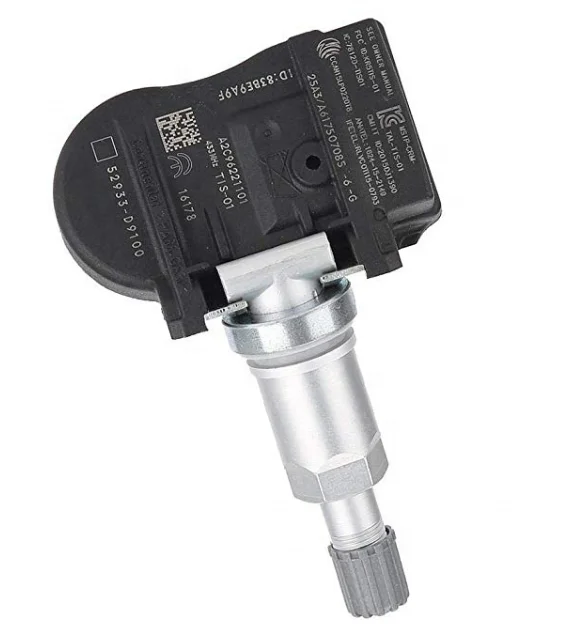
How to reset Hyundai Elantra tire pressure monitoring system (TPMS) light
You’ve checked your tire pressure and added the right amount of air—but for some reason, your TPMS dashboard light is still on. If that’s the case, you may need to
reset your TPMS
.
To reset the TPMS in a Hyundai Elantra, follow these steps:
Locate the tire pressure reset button. The exact location of your button can vary, but typically you’ll find it located to the right of the steering wheel or below the dash.
Put your key in the ignition and turn it to the “ON” position—but don’t start your car yet!
Hold down the TPMS reset button until the corresponding light blinks three times.
Release the TPMS button.
Start your car and let it run for at least 20 minutes, to allow your TPMS sensor time to reset.
When you follow this procedure, the TPMS light should automatically reset and turn off.
If you notice the TPMS light is still on after you’ve completed the above steps, you have a couple of options. One DIY trick is to drive around for 10 minutes at 50 mph or above, as doing so can potentially reset your TPMS sensor.
Another trick is to inflate all four tires to 3 psi above the recommended amount, then deflate them completely before reinflating them once more. Reinflating your flat tires should trigger a reset for your TPMS, and switch off that pesky light.
Alternatively, you can try disconnecting the positive battery cable in your vehicle. Turn your vehicle off before disconnecting the cable—then start your car and lay on the horn for a good 5 seconds or so (this should dispel any remaining power in your car’s system). Once you reconnect the battery cable, the TPMS should automatically reset.
If all else fails, you can always bring your Hyundai Elantra to a professional for help diagnosing the problem.
How to save on Hyundai Elantra insurance
No matter the Elantra you drive, make sure your Hyundai is protected with the best car insurance from
Jerry
. A licensed broker, Jerry can help you find competitive quotes from over 55+ name-brand providers in under a minute—all from the convenience of your phone.
It’s this simple: just download the app, answer a few basic questions about you and your car, and let Jerry do the rest. In just 45 seconds, Jerry can use your information to compile a selection of competitive quotes from top insurance companies across the country.
Once you’ve made your selection, it doesn’t stop there—Jerry can help with everything from securing your new policy to finalizing the paperwork, and can even cancel your old
car insurance
upon request!
“I signed up for a new policy with
Jerry
’s help.
I ended up saving $236 a month after my switch. Thank you, Jerry!” —Adelaide C.
RECOMMENDED
No spam or unwanted phone calls · No long forms · No fees, ever
ZIP Code
ZIP Code
Find insurance savings (100% Free)
JavaScript is disabled. For a better experience, please enable JavaScript in your browser before proceeding.
1 - 20 of 28 Posts
1 - 20 of 28 Posts
 Please consider creating a new thread.
Please consider creating a new thread.Top
Accent | Amica | atos | Avanta | Azera | coupe | Crete | Elantra | Equus | Excel | Genesis | getz | grandeur | i10 | i20 | ix25 | Lantra | Santro | solaris | Tiburon | Tuscani | Verna | XG
Hyundai Motor Company is a South Korean automobile manufacturer. After the takeover in 1998, Kia Motors became the fourth largest automaker in the world and the largest in South Korea. Translated from Korean, the word Hyundai means "modernity".
Hyundai Accent is a compact car that, in addition to South Korea, is assembled in seven other countries. These are Turkey, Iran, Pakistan, India, as well as in the CIS countries - Russia, Ukraine and Kazakhstan. In some countries this model is sold under other names. For example, in Russia it is Solaris , and in Australia Exel (until 2000). Another name is also in use - Verna .
Another name is also in use - Verna .
The first generation Accent is an independent development of the South Korean automaker, which was released in 1994 and was produced since 1995 in three bodies: a sedan, a three- and five-door hatchback with a 1.3 or 1.5 liter gasoline engine. A very modern design at that time, combined with a low price, made it possible for the Hyundai Accent to occupy a fairly decent niche in Russia and other countries, including European countries. The complete set of this car ranged from the simplest to the complete, including power steering, electric car lifts, automatic transmission and airbags.
The second generation appeared in 2000, the name changed to Accent LC (after external cosmetic updates in 2003 - Accent LC2). The design has become more linear, more space inside. In addition to the new 1.3-liter 12-valve engine and a 1.5-liter 16-valve engine, a diesel version appeared with a 1.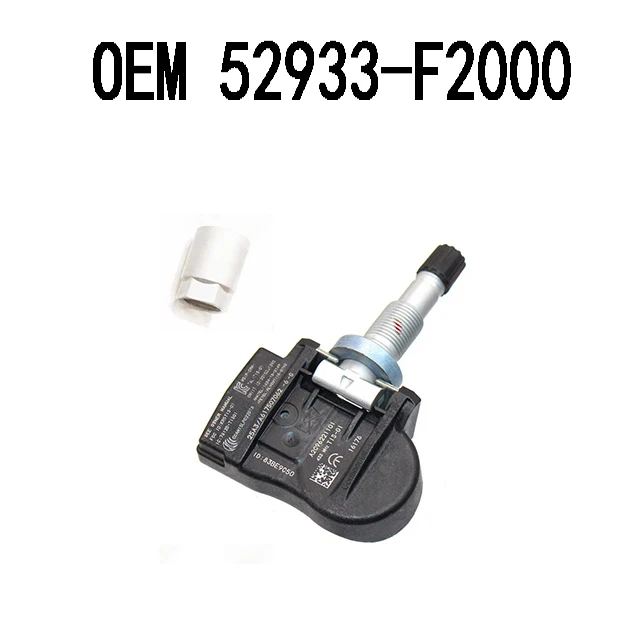 5-liter 3-cylinder CRDi turbodiesel. In the Russian Federation, it was produced at TagAZ until 2012.
5-liter 3-cylinder CRDi turbodiesel. In the Russian Federation, it was produced at TagAZ until 2012.
Third generation. The model was updated in 2006. Accent MC (called Verna in Russia) is built on the basis of the Kia Rio. Under the hood is a new CVVT engine with a volume of 1.4 and 1.6 liters, a new look and interior. Produced until 2010. Tire pressure Hyundai Accent see the table:
| ↔ Wheel inflation Hyundai Accent 2006-2010 | |||||
|---|---|---|---|---|---|
| engine | tire size | normal load | increased load | ||
| front wheels (atm/psi) | rear wheels (atm/psi) | front wheels (atm/psi) | rear wheels (atm/psi) | ||
| 1.4, 71kW 1.6, 82kW | 175/70 R14 84T 185/65 R14 86T 195/55 R15 85V | 2.1/30 | 2.1/30 | 2.3/33 | 2.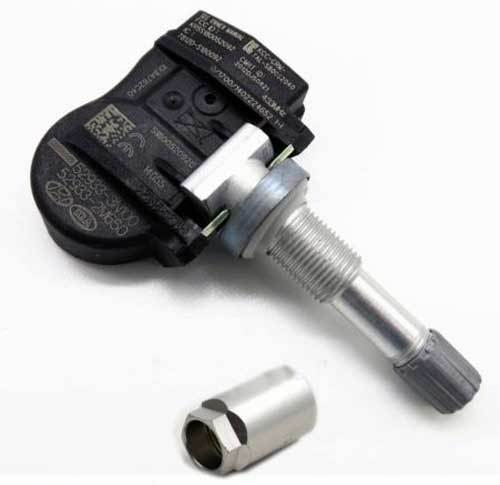 3/33 3/33 |
| 205/45 R16 83V | 2.2/32 | 2.2/32 | 2.4/34 | 2.4/34 | |
| 1.5 CRDi, 81kW | 175/70 R14 84T 185/65 R14 86T 195/55 R15 85V | 2.2/32 | 2.2/32 | 2.3/33 | 2.3/33 |
| 205/45 R16 83V | 2.3/33 | 2.3/33 | 2.4/34 | 2.4/34 | |
Fourth generation. Accent RB. 2011-present. The presentation took place in 2010 at the Beijing Motor Show. Changed dimensions, design, interior. New engines 1.4 liters (107 HP) and 1.6 liters (123 HP). In Russia, the model is called Solaris, in China - Verna, in Israel - i25, in Mexico - Dodge Attitude.
Hyundai Atos is a five-door front-wheel drive minicar, which first appeared in 1997 in South Korea, and later produced at the concern's factories in Pakistan and Malaysia (until 2007) and India (until 2014).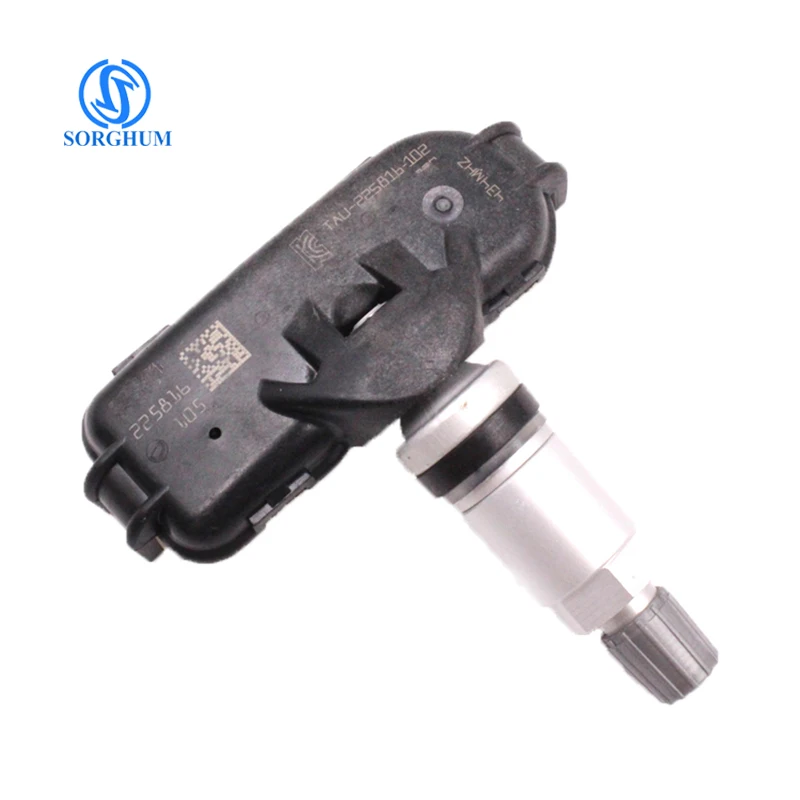 4-cylinder engine develops 56 hp. with a fuel consumption of 6 liters per 100 km. In 2003, the Hyundai Atos underwent a restyling, new security systems were added. In the UK this car is called Hyundai Amica , in South Korea and Indonesia - Kia Visto , in Pakistan and India - Hyundai Santro , in Mexico - Dodge Atos.
4-cylinder engine develops 56 hp. with a fuel consumption of 6 liters per 100 km. In 2003, the Hyundai Atos underwent a restyling, new security systems were added. In the UK this car is called Hyundai Amica , in South Korea and Indonesia - Kia Visto , in Pakistan and India - Hyundai Santro , in Mexico - Dodge Atos.
| ↔ Hyundai Atos | tire pressure|||||
|---|---|---|---|---|---|
| engine | tire size | normal load | increased load | ||
| front wheels (atm/psi) | rear wheels (atm/psi) | front wheels (atm/psi) | rear wheels (atm/psi) | ||
| 1.0, 40kW 1.1, 46kW | 155/70 R13 75T 175/60 R13 77T | 2.1/30 | 2.1/30 | 2.2/32 | 2.2/32 |
Hyundai Coupe - a three-door car that debuted at the Geneva Motor Show in 1996. Produced until 2009, it underwent significant design changes four times. It was actively advertised in video games and gained popularity due to its low price (due to inexpensive finishing materials and the unavailability of additional options). In Australia, New Zealand and the USA, the Hyundai Coupe is called differently: Hyundai Tiburon , Tuscani .
Produced until 2009, it underwent significant design changes four times. It was actively advertised in video games and gained popularity due to its low price (due to inexpensive finishing materials and the unavailability of additional options). In Australia, New Zealand and the USA, the Hyundai Coupe is called differently: Hyundai Tiburon , Tuscani .
First generation. The first generation Hyundai Coupe has been on sale since 1996 with 1.6 and 1.8 liter engines. In the USA, under the Tiburon brand, it was equipped with an engine from the Hyundai Elantra model. A more powerful, two-liter engine was installed on the Tiburon FX version. Release discontinued in 2002. The press claimed that the design and suspension of the Hyundai Tiburon was developed jointly with Porsche.
Second generation. 2002-2008. New design, increased overall dimensions, the car gained weight 91 kg. An additional version of the engine appeared - a V-shaped "six" with a volume of 2. 7 liters, which was also equipped with two other Hyundai models - Santa Fe and Sonata. A five-speed manual transmission was standard. For the V6 engine (with CVVT technology, it produced 143 hp instead of the previous 134), a six-speed gearbox is provided - such a Coupe (Tiburon) car was positioned as a luxury version. Automatic transmission was an optional extra for the standard model. The automaker recommends inflating Hyundai Coupe tires to the values indicated in the tables:
7 liters, which was also equipped with two other Hyundai models - Santa Fe and Sonata. A five-speed manual transmission was standard. For the V6 engine (with CVVT technology, it produced 143 hp instead of the previous 134), a six-speed gearbox is provided - such a Coupe (Tiburon) car was positioned as a luxury version. Automatic transmission was an optional extra for the standard model. The automaker recommends inflating Hyundai Coupe tires to the values indicated in the tables:
| ↔ Hyundai Coupe tire pressure 2002-2008 | |||||
|---|---|---|---|---|---|
| engine | tire size | normal load | increased load | ||
| front wheels (atm/psi) | rear wheels (atm/psi) | front wheels (atm/psi) | rear wheels (atm/psi) | ||
| 2.0 16V, 105KW | 195/65 R15 91V | 2.1/30 | 2.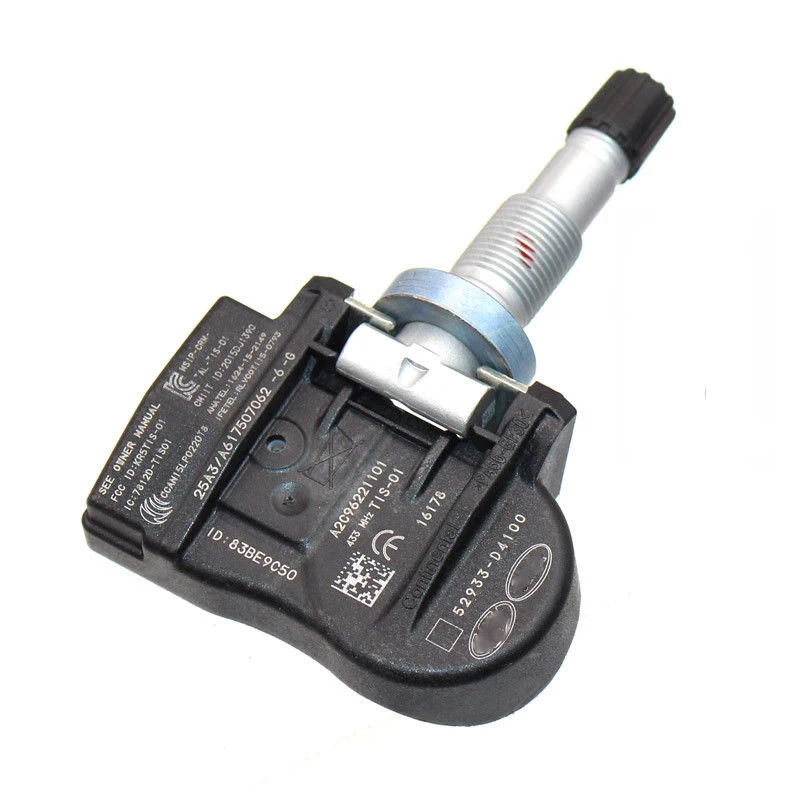 1/30 1/30 | 2.1/30 | 2.1/30 |
| 205/55 R16 91V 215/45 R17 87V | 2.1/30 | 2.1/30 | 2.3/33 | 2.3/33 | |
| 2.7 V6, 123KW | 205/55 R16 91V 215/45 R17 87V | 2.1/30 | 2.1/30 | 2.1/30 | 2.1/30 |
Third generation. Design changes affected the interior, optics, bumpers, headlights became teardrop-shaped, side turn signals in the form of a circle. In 2008, the car was equipped with a sports suspension and discs for 17, cruise control, air conditioning, a new exhaust system and an engine of 143 hp. was named Hyundai Tiburon TSIII Limited Edition. Successor to Hyundai Coupe in 2009year became the Hyundai Genesis Coupe.
Hyundai Creta is a mini crossover produced from 2014 to the present. The model has a progenitor - Hyundai i20, which is probably why it is sometimes referred to as Hyundai ix25 (another name for Hyundai Cantus).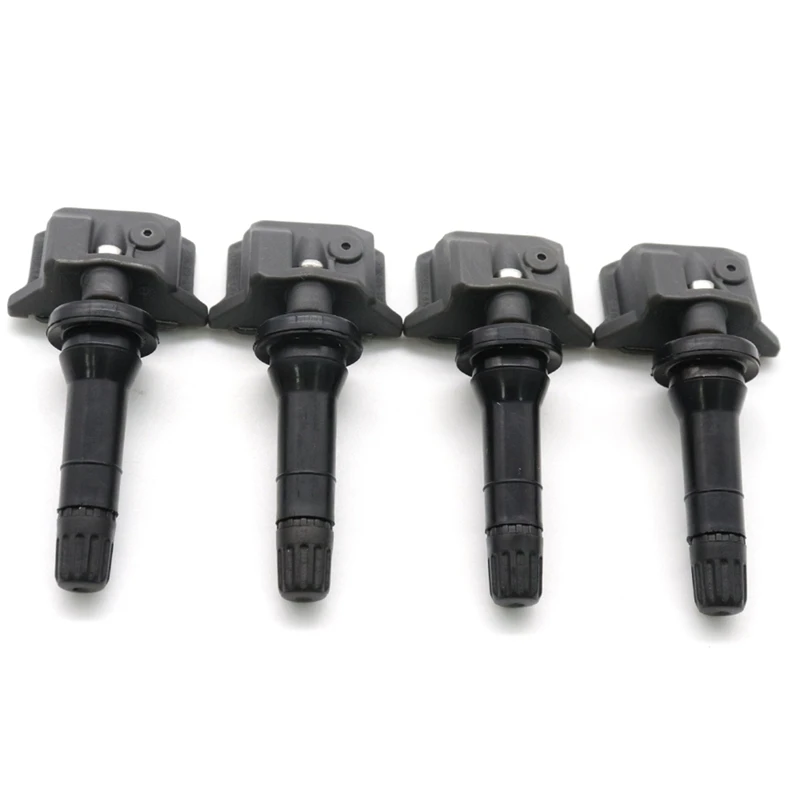 In addition to the basic configuration, there are S, S +, SX, SX +, SX (O). Assembly is carried out in Russia and India. Under the hood, a 1.6 or 2 liter petrol engine is possible, as well as a 1.4 or 1.6 liter diesel engine.
In addition to the basic configuration, there are S, S +, SX, SX +, SX (O). Assembly is carried out in Russia and India. Under the hood, a 1.6 or 2 liter petrol engine is possible, as well as a 1.4 or 1.6 liter diesel engine.
| ↔ Hyundai Creta 2014 tire inflation - present | |||||
|---|---|---|---|---|---|
| engine | tire size | normal load | increased load | ||
| front wheels (atm/psi) | rear wheels (atm/psi) | front wheels (atm/psi) | rear wheels (atm/psi) | ||
| 1.4, 94hp 1.6, 128hp 1.6, 124hp 2.0, 150hp | 205/65 R16 215/60 R17 | 2.3/33 | 2.3/33 | 2.5/37 | 2.5/37 |
Hyundai Elantra is a mid-size car. In 2008-2009, he was recognized by the press as one of the best in his class.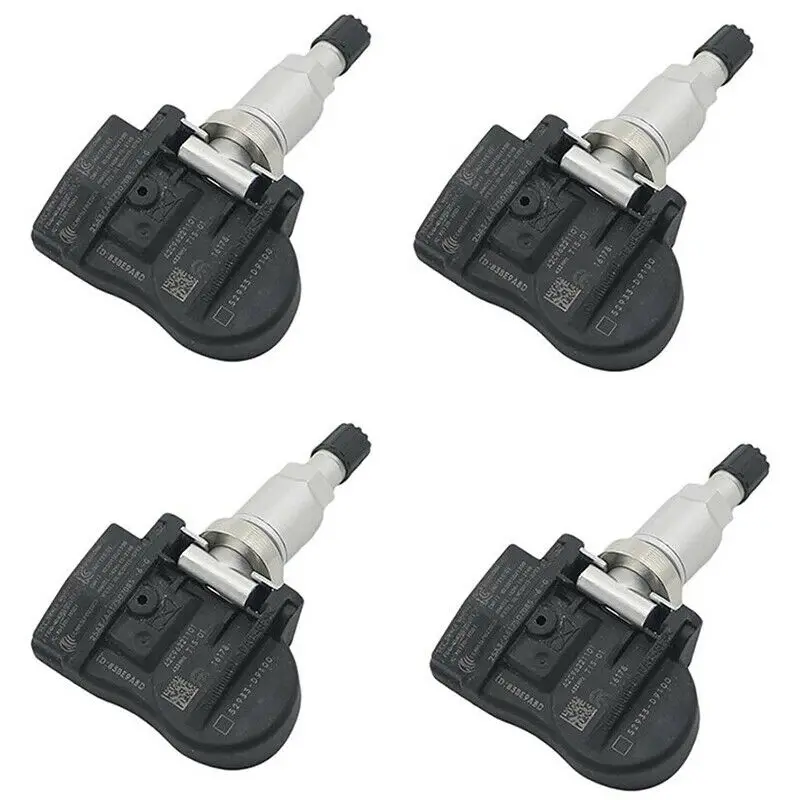 In the 90s of the last century, it was produced under the names Avanta or Lantra due to the claims of other automakers that the brand was in tune with competing models.
In the 90s of the last century, it was produced under the names Avanta or Lantra due to the claims of other automakers that the brand was in tune with competing models.
| ↔ Fifth generation Hyundai Elantra tire inflation | |||||
|---|---|---|---|---|---|
| engine | tire size | normal load | increased load | ||
| front wheels (atm/psi) | rear wheels (atm/psi) | front wheels (atm/psi) | rear wheels (atm/psi) | ||
| 1.6L DOHC, 77KW 1.8L DOHC, 97KW 2.0L DOHC, 105KW 2.0L CRDi, 83KW | 195/65 R16 91H 205/55 R16 91H 215/45 R17 87H | 2.2/32 | 2.2/32 | 2.2/32 | 2.2/32 |
Older tire pressures may be 2.0 bar (29 psi).
First generation.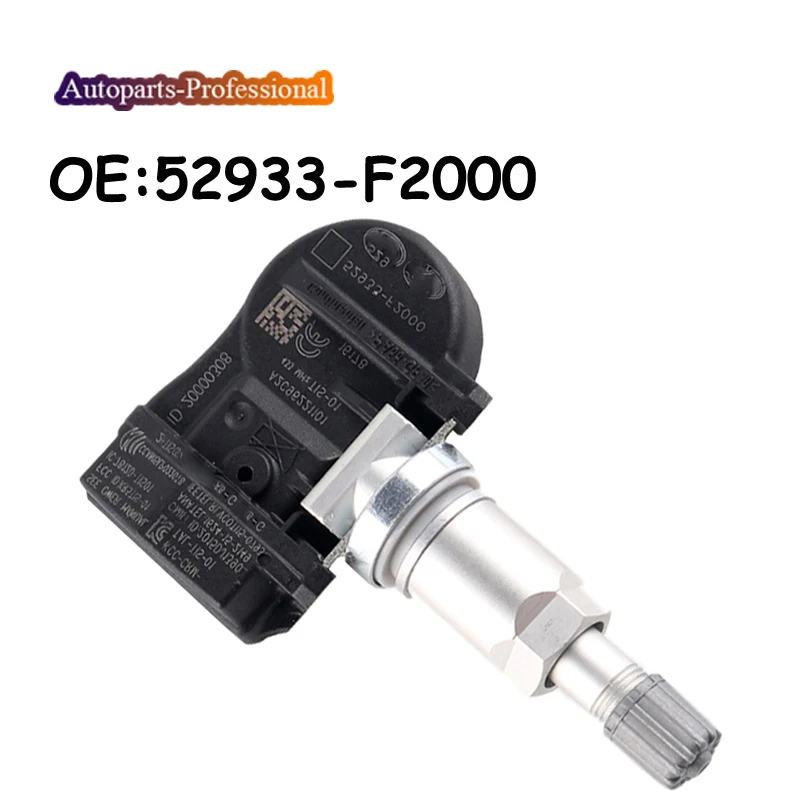 Self-designed by Hyundai Corporation, the first Elantra (" J1 ") was produced from 1991-1994. It was equipped with a Japanese 1.5 liter b5 Mitsubishi 4G15 engine. The design of both the first and second generation Elantra was largely borrowed from the third and fourth generation Mitsubishi Mirage, respectively.
Self-designed by Hyundai Corporation, the first Elantra (" J1 ") was produced from 1991-1994. It was equipped with a Japanese 1.5 liter b5 Mitsubishi 4G15 engine. The design of both the first and second generation Elantra was largely borrowed from the third and fourth generation Mitsubishi Mirage, respectively.
Second generation. 1994-2000 During these years the car was called Lantra . It has smoother body lines, a spacious interior, a rounded dashboard. Engines of completely Hyundai development with a volume of 1.6, 1.8, 1.9 (diesel) and 2.0 liters. The station wagon model had the name Lantra Station.
Third generation. 2000-2006 The third generation Hyundai Elantra was produced with petrol engines of 1.6, 1.8, 2.0 liters and a 2-liter turbo diesel. Only models with a 2-liter gasoline engine were supplied to the American market and as standard with airbags, air conditioning, central locking, electric side windows (GLS equipment).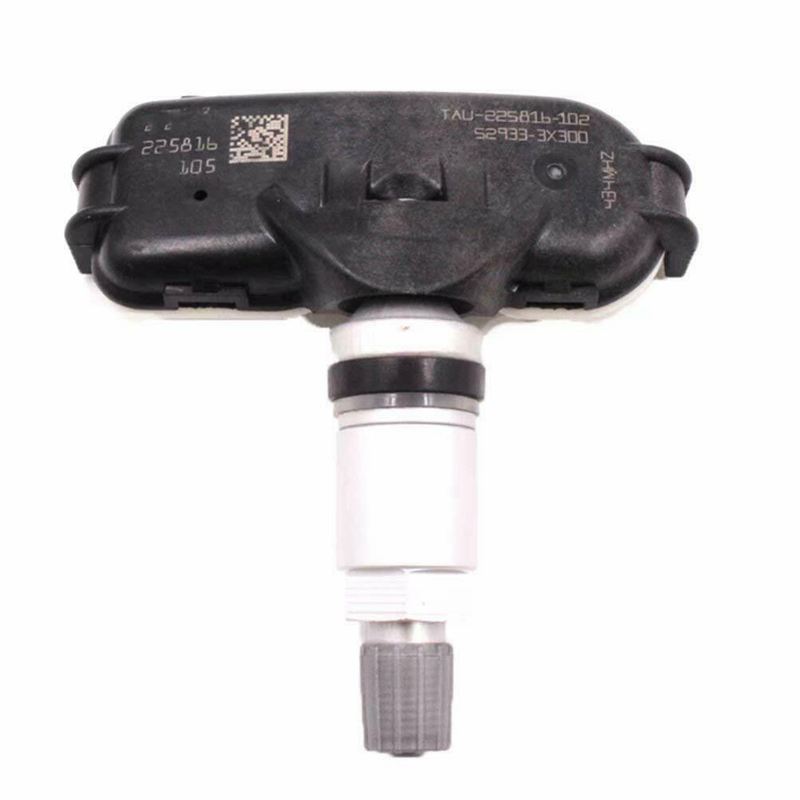 Fog lights, a spoiler, alloy wheels and leather upholstery featured the top-of-the-line GT trim.
Fog lights, a spoiler, alloy wheels and leather upholstery featured the top-of-the-line GT trim.
Fourth generation. 2006-2011 The model had an HD prefix, it was on its basis that the Hyundai i30 hatchback was created for the European market. Where the alphanumeric code replaced the vehicle name. In this code, the letter "i" in English means "inspiration" (inspiration), and the number - belonging to a particular segment.
Fifth generation. 2010-2015 Hyundai Elantra MD (in South Korea - Avante) is the first Korean class C + car, it combines GDI systems and a 6-speed automatic transmission. In the top configuration, the Elantra MD is equipped with heated rear seats, a rain sensor and an air ionizer in the cabin. Restyled in 2014, the model received the UD index. The fifth generation Hyundai Elantra is an intermediate link between Solaris and Sonata.
Sixth generation. 2016-present Hyundai Elantra AD is a front-wheel drive C-class sedan.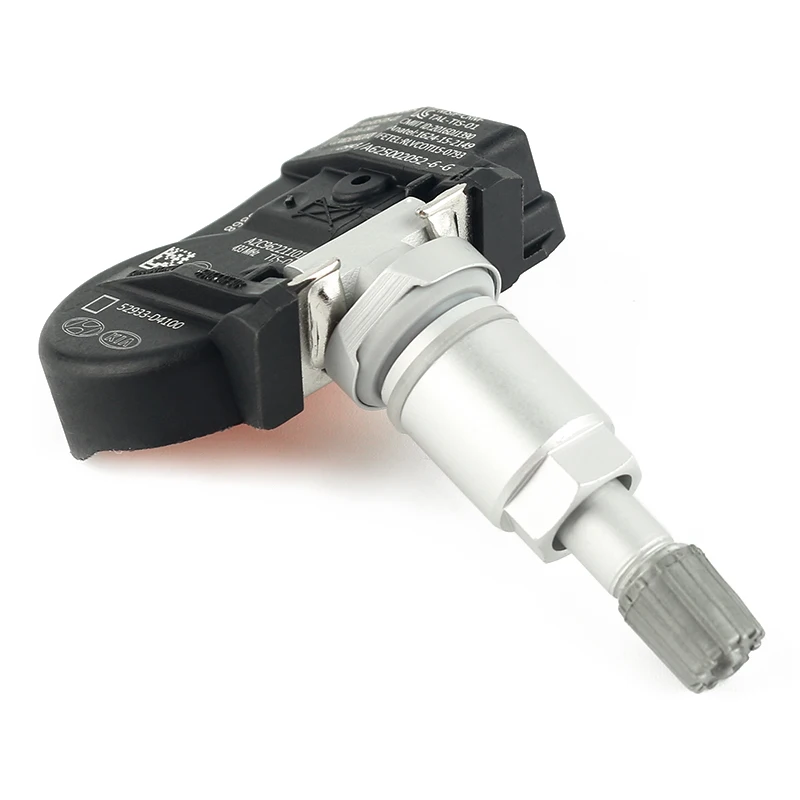 Gearbox options: mechanics, automatic and robot. Gasoline engines with a capacity of 1.6 (G4FG) to 2.0 (G4NA) liters.
Gearbox options: mechanics, automatic and robot. Gasoline engines with a capacity of 1.6 (G4FG) to 2.0 (G4NA) liters.
Equus is Hyundai's full-size and most expensive luxury car. The release period is 1999-2016, the successor produced after 2016 is the Hyundai Genesis G90 model.
Hyundai EquusFirst generation Hyundai Equus. 1999-2009 Front-wheel drive, eight-speed automatic transmission, engine from 3-liter V6 to 4.6 liters. V8 GDI. The design was developed by the Japanese and repeats the Mitsubishi Proudia. The first generation Hyundai Equus was supposed to compete with the SsangYong Chairman, as well as the BMW 7 and Mercedes-Benz S-Class. The release was carried out only in South Korea.
Second generation. An almost completely different car with rear wheel drive, on the basis of which a limousine with increased length and a five-liter V8 engine was built. The model was named "Hyundai Equus VI". In Russia, it was produced in Kaliningrad.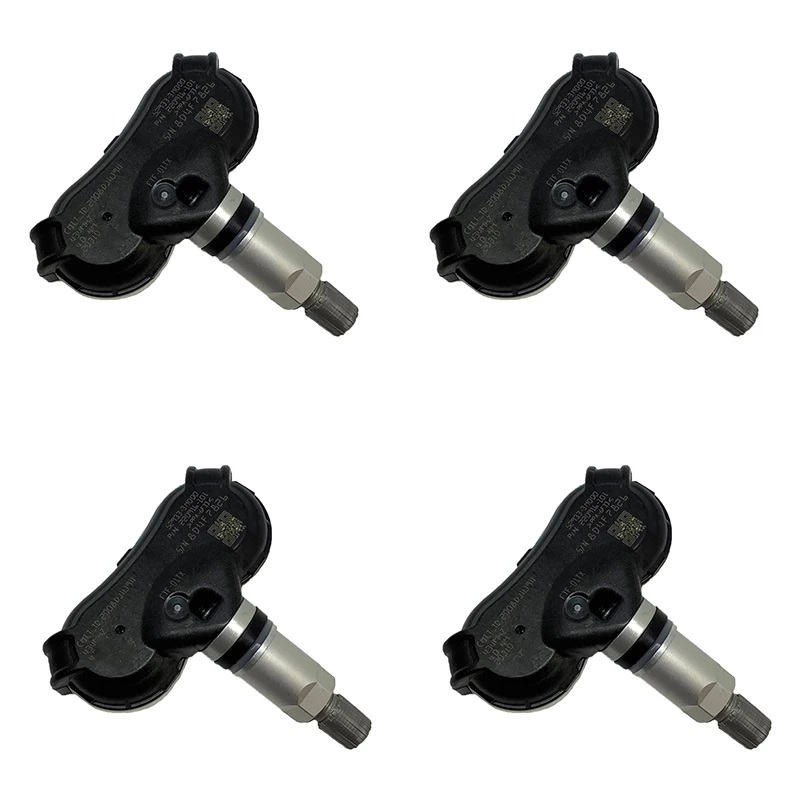
| ↔ Hyundai Equus 2009-2016 | |||||
|---|---|---|---|---|---|
| engine | tire size | normal load | increased load | ||
| front wheels (atm/psi) | rear wheels (atm/psi) | front wheels (atm/psi) | rear wheels (atm/psi) | ||
| V6 GDI, 246kW V8, 274kW V8 GDI, 316kW | 235/55R17 101V 245/45R1999V 245/50R18 101V 275/40R19 101V | 2.1/30 | 2.1/30 | 2.1/30 | 2.1/30 |
| 245/40R20 97W 275/35R20 99W | 2.3/33 | 2.3/33 | 2.3/33 | 2.3/33 | |
Hyundai Genesis is a premium business-class sports sedan produced since 2008. In addition to the sedan, a two-door coupe variant (Hyundai Genesis Coupe) is produced, which first saw the light of day in the fall of 2008 and was produced until 2016.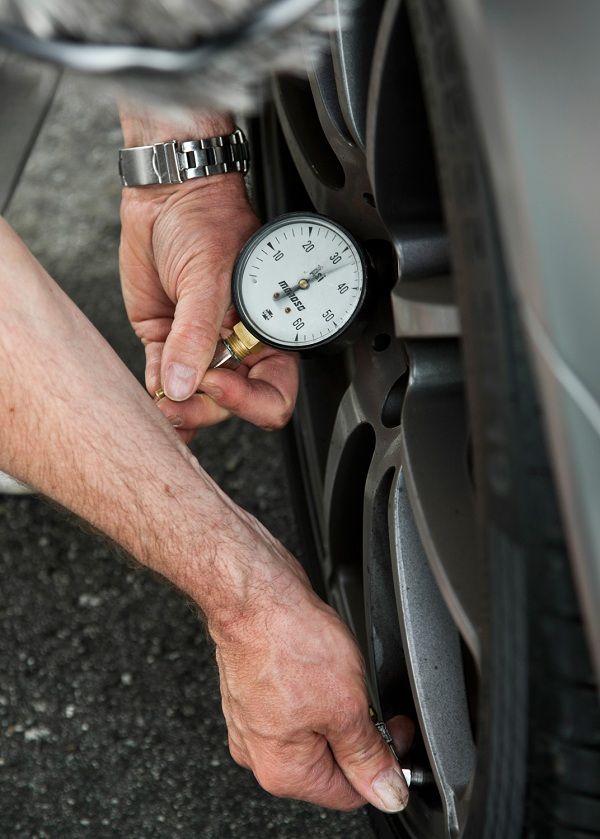
First generation. 2008-2014 Introduced in New York in 2007. Engine from 3.3 (3.8) V6 to 4.6 (5.0) liters V8. 6-speed automatic transmission (after 2011 - eight-speed).
| ↔ Hyundai Genesis tire pressure (first generation) | |||||
|---|---|---|---|---|---|
| engine | tire size | normal load | increased load | ||
| front wheels (atm/psi) | rear wheels (atm/psi) | front wheels (atm/psi) | rear wheels (atm/psi) | ||
| 2010-2012: 2.0T, 157kW 2012-2014: 2.0T, 202kW | 225/45 R18 91W 245/45 R18 96W 225/40 R19 89Y 245/40 R19 94Y | 2.4/34 | 2.4/34 | 2.4/34 | 2.4/34 |
Second generation. 2014-present It has its own emblem on the hood, has an all-wheel drive system HTRAC (Hyundai Traction), which controls the traction between the axles. The second generation Hyundai Genesis, in addition to the usual systems, has the option of air quality control, a projection screen and a large display. After restyling in 2017, the model was named Genesis G80.
2014-present It has its own emblem on the hood, has an all-wheel drive system HTRAC (Hyundai Traction), which controls the traction between the axles. The second generation Hyundai Genesis, in addition to the usual systems, has the option of air quality control, a projection screen and a large display. After restyling in 2017, the model was named Genesis G80.
| ↔ Hyundai Genesis tire pressure (second generation) | |||||
|---|---|---|---|---|---|
| engine | tire size | normal load | increased load | ||
| front wheels (atm/psi) | rear wheels (atm/psi) | front wheels (atm/psi) | rear wheels (atm/psi) | ||
| 3.8 V6, 232KW | 245/40 R19 98Y 275/35 R19 100Y | 2.7/40 | 2.7/40 | 2.7/40 | 2.7/40 |
Hyundai Getz is a minicar produced in 2002-2011.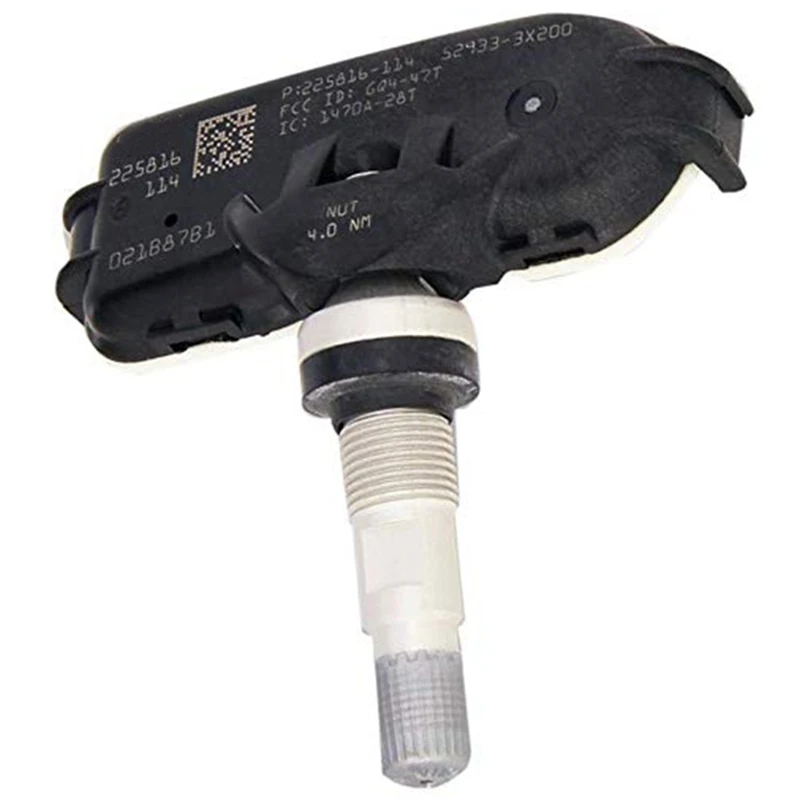 After restyling in 2005 and cheaper due to the rejection of some options and the use of less expensive interior trim materials, the model was called Gets II.
After restyling in 2005 and cheaper due to the rejection of some options and the use of less expensive interior trim materials, the model was called Gets II.
Hyundai Getz was equipped with gasoline engines:
as well as a one and a half liter CRDi diesel.
Three-door Hyundai Getz| ↔ Hyundai Getz 2006-2008 tire inflation | |||||
|---|---|---|---|---|---|
| engine | tire size | normal load | increased load | ||
| front wheels (atm/psi) | rear wheels (atm/psi) | front wheels (atm/psi) | rear wheels (atm/psi) | ||
| 1.1, 49kW 1.4, 71kW 1.4, Cross 71kW 1.6, 78kW since 2006 | 165/65 R14 79T 175/65 R14 82T 185/55 R15 82T | 2. 1/30 1/30 | 2.1/30 | 2.3/33 | 2.3/33 |
| 1.5 CRDI, 65KW | 2.2/32 | 2.2/32 | 2.3/33 | 2.3/33 | |
Hyundai Grandeur has six generations and several exterior and interior changes in between. The release began in 1986 and for the first two years the Grander was positioned as a full-size luxury car. After modifications 19'88 is considered a mid-size executive car. In many countries it is sold under the name Hyundai Azera or Hyundai XG .
Hyundai Grandeur 4th generation| ↔ Hyundai Grandeur 2005-2011 tire pressure | |||||
|---|---|---|---|---|---|
| engine | tire size | normal load | increased load | ||
| front wheels (atm/psi) | rear wheels (atm/psi) | front wheels (atm/psi) | rear wheels (atm/psi) | ||
3.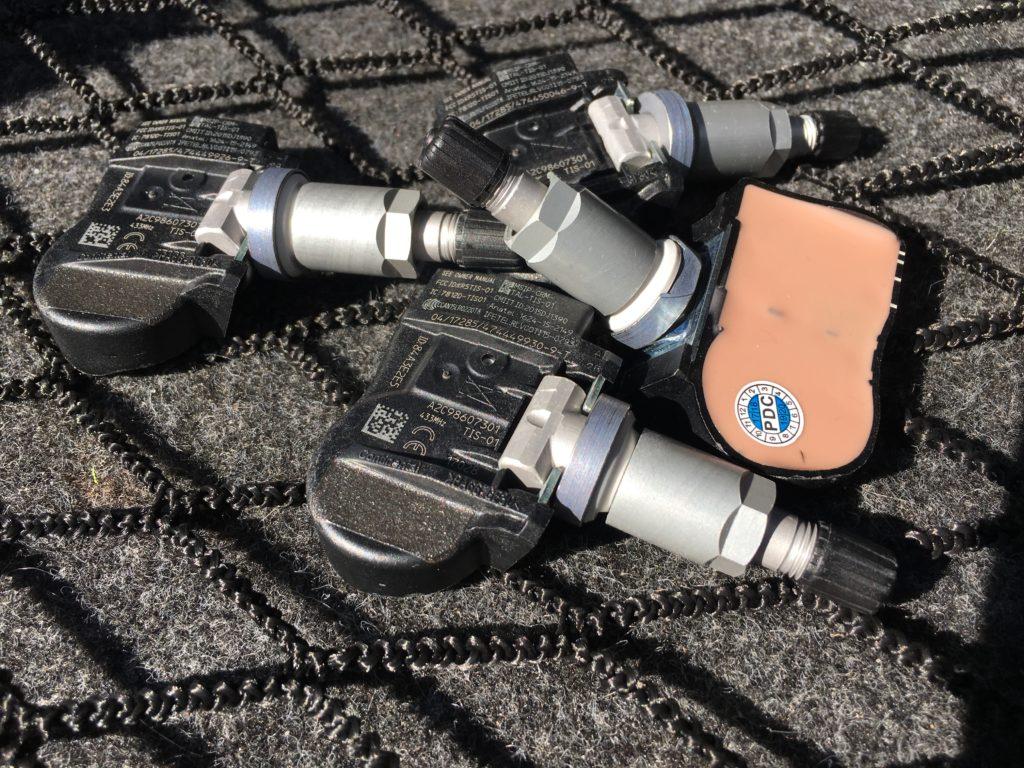 3 V6, 173kW 3 V6, 173kW 2.2 CRDI, 114kW | 225/60 R16 98W/V 235/55 R17 99W/V | 2.1/30 | 2.1/30 | 2.2/32 | 2.2/32 |
The Hyundai i10 is the successor to the Atos city car, originally produced by the Korean automaker at its plant in India. This hatchback is equipped with petrol 1.0 (three cylinders, 48kW) and 1.2 liters (four cylinders, 57kW) or diesel 1.1 55kW engine. Since 2019year, the third generation Hyundai Ai10 is available to the consumer.
Hyundai Grand i10| ↔ Hyundai i10 tire pressure | |||||
|---|---|---|---|---|---|
| engine | tire size | normal load | increased load | ||
| front wheels (atm/psi) | rear wheels (atm/psi) | front wheels (atm/psi) | rear wheels (atm/psi) | ||
| 2008-2010 | |||||
1. 1, 49kW 1, 49kW 1.1 LPG, 47kW 1.2 LPG, 54kW 1.2, 57kW | 165/60 R14 75T 175/60 R14 79T | 2.3/33 | 2.3/33 | 2.5/37 | 2.5/37 |
| 1.1 CRDi, 55kW | 175/60 R14 79H | 2.3/33 | 2.3/33 | 2.5/37 | 2.5/37 |
| 2011-2019 | |||||
| 1.1, 51kW 1.2, 63kW | 155/70 R13 75T | 2.5/37 | 2.5/37 | 2.5/37 | 2.5/37 |
| 175/65 R14 82H 185/55 R15 82H | 2.2/32 | 2.2/32 | 2.3/33 | 2.4/34 | |
The Hyundai i20 hatchback, whose tire pressures you can see below, first went on sale in 2008. In the Russian Federation, this model of a Korean car appeared a year later. And at one time I had complaints from consumers for the suspension inappropriate for Russian operating conditions. The first generation Ai20 was produced in South Korea, Turkey and India. This subcompact hatchback has replaced the Getz in Hyundai's lineup.
This subcompact hatchback has replaced the Getz in Hyundai's lineup.
| ↔ Hyundai i20 tire pressure | |||||
|---|---|---|---|---|---|
| engine | tire size | normal load | increased load | ||
| front wheels (atm/psi) | rear wheels (atm/psi) | front wheels (atm/psi) | rear wheels (atm/psi) | ||
| first generation, 2008 - 2014 | |||||
| 1.2, 57kW 1.2, 63kW 1.4, 74kW 1.1 CRDi, 55kW 1.4 CRDi, 66kW | 175/70 R14 84T 185/60 R15 84H | 2.3/33 | 2.3/33 | 2.5/37 | 2.5/37 |
| 1.6, 93kW 1.6 CRDI, 94kW | 185/60 R15 84H | ||||
| second generation 2014 - 2020 | |||||
1. 2, 55kW 2, 55kW 1.2, 62kW 1.1 CRDi, 55kW | 185/65 R15 88T 195/55 R16 87H | 2.3/33 | 2.3/33 | 2.5/37 | 2.5/37 |
| 1.4, 74kW 1.4 CRDi, 66kW | 195/55 R16 87H | ||||
Hyundai i30 is a compact car designed on the same platform as Kia Сeed. It has a five-door hatchback or station wagon body, a gasoline or diesel engine and a manual or automatic transmission. Ai30 station wagon sold in North America under the name Elantra Touring .
Hyundai i30, first generation| ↔ Hyundai i30 tire inflation | |||||
|---|---|---|---|---|---|
| engine | tire size | normal load | increased load | ||
| front wheels (atm/psi) | rear wheels (atm/psi) | front wheels (atm/psi) | rear wheels (atm/psi) | ||
| First generation, hatchback 2007-2012 | |||||
1.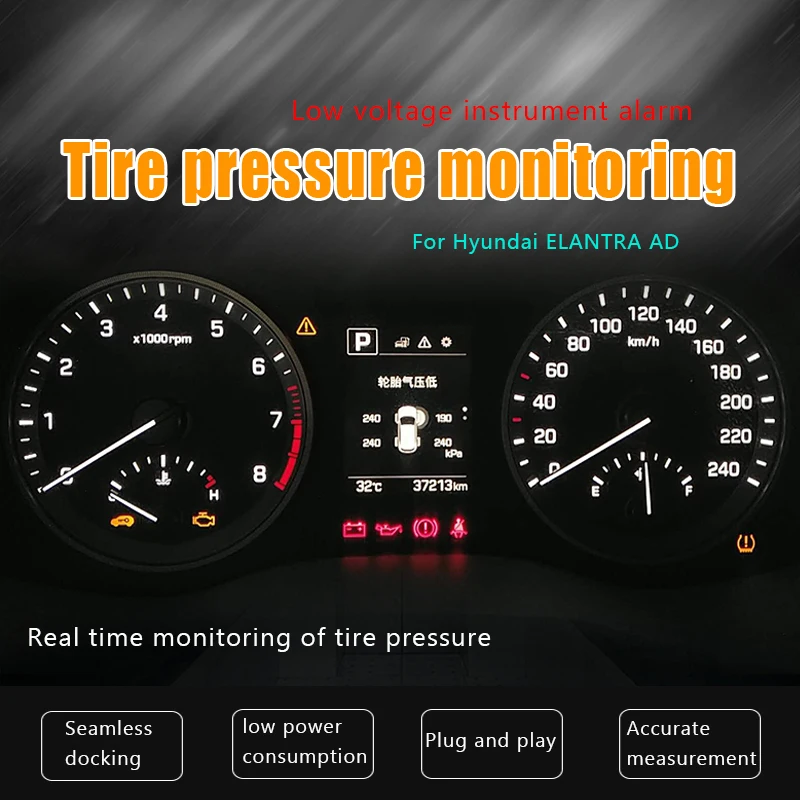 4, 80kW 4, 80kW 1.6, 93kW 1.6 CRDi, 66kW 1.6 CRDi, 85kW | 185/65 R15 88H 195/65 R15 91H 205/55 R16 91H 225/45 R17 91V | 2.2/32 | 2.2/32 | 2.2/32 | 2.2/32 |
| 2.0, 105kW 2.0 CRDi, 103kW | 185/65 R15 88V | 2.3/33 | 2.3/33 | 2.4/34 | 2.4/34 |
| 195/65 R15 91V 205/55 R16 91V 225/45 R17 91V | 2.2/32 | 2.2/32 | 2.2/32 | 2.2/32 | |
| First generation i30cw ( crossover wagon ) 2007-2012 | |||||
| 1.4, 80kW 1.6, 93kW 1.6 CRDi, 66kW 1.6 CRDi, 85kW | 185/65 R15 88H 205/55 R16 91H | 2.2/32 | 2.2/32 | 2.2/32 | 2.2/32 |
| 2.0, 105kW 2.0 CRDi, 103kW | 185/65 R15 88V 205/55 R16 91V | ||||
| i30 hatchback , second 2012-2017 and third 2017 - present generation | |||||
1. 4, 73kW 4, 73kW 1.4 CRDi, 66kW 1.6 CRDi, 81kW 2017:1.0 GDI, 88kW 1.6 CRDi, 70kW | 195/65 R15 91H 205/55 R16 91H 225/45 R17 91V | 2.2/32 | 2.2/32 | 2.2/32 | 2.2/32 |
| 1.6 GDI, 99kW 1.6 CRDi, 94kW | |||||
| Second generation i30cw ( crossover wagon ) 2012-2017 | |||||
| 1.4, 73kW 1.4 CRDi, 66kW 1.6 CRDi, 81kW | 195/65 R15 91H 205/55 R16 91H 225/45 R17 91V | 2.2/32 | 2.2/32 | 2.2/32 | 2.2/32 |
| 1.6 GDI, 99kW 1.6 CRDi, 94kW | |||||
| i30 coupe second generation 2013 - present | |||||
| 1.4, 73kW 1.4 CRDi, 66kW | 195/65 R15 91H 205/55 R16 91H 225/45 R17 91H | 2. 2/32 2/32 | 2.2/32 | 2.2/32 | 2.2/32 |
| 1.6, 99kW 1.6 CRDi, 94kW | 205/55 R16 91V 225/45 R17 91V | 2.2/32 | 2.2/32 | 2.2/32 | 2.2/32 |
| GENERAL |
Tires are the only parts of a car that are constantly in contact with the road. Even the total contact surface of all tires is small. Therefore, it is necessary to regularly carry out a thorough check of the tires, as well as your own safety, and the safety of other road users to a large extent depends on the condition of the tires.
Constant monitoring of the condition of the tires makes it possible to detect intensive wear and eliminate its cause, which will avoid more serious consequences.
If there is uneven tire wear, the cause must be found and corrected.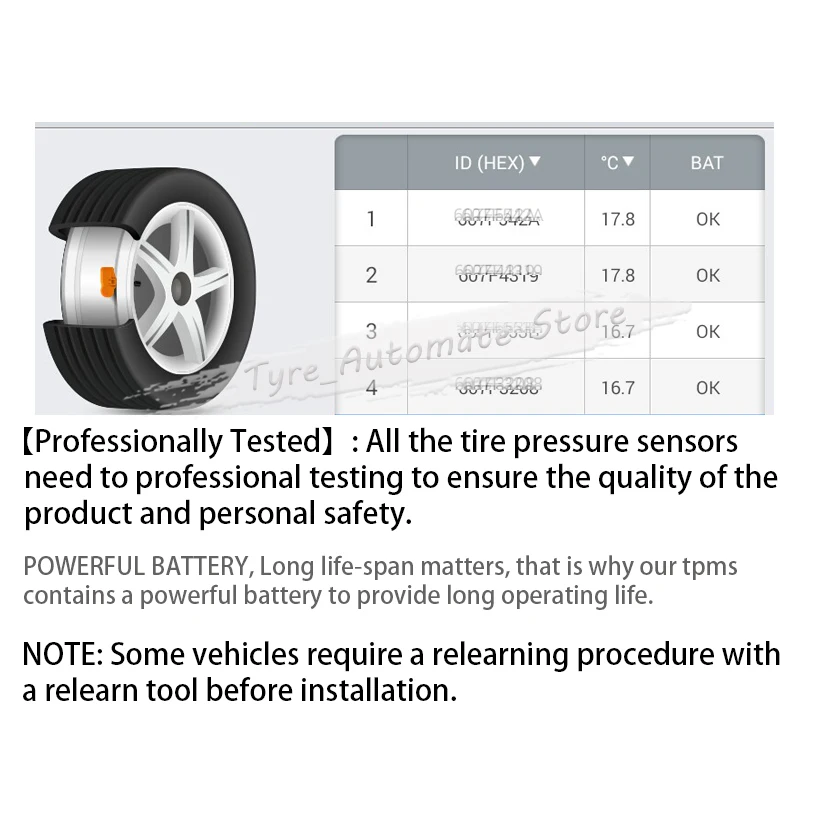 her.
her.
Check the tires for cuts, punctures and foreign objects in the tires. Tire leaks can be identified with soap suds.
Carefully inspect the inside side of each tire for signs of brake fluid.
Proper tire pressure extends tire life, so tire pressure should be maintained regularly check. Check tire pressure only when tires are cold.
Tire wear check
| The position of the pointers is indicated by a triangular mark on the side wall tires. |
Tire tread depth measurement
Tire tread depth can be controlled special device. When the tire wear limit is reached, it is necessary to replace. When the tire wear limit is reached, it is necessary to replace. |
Tire pressure check
| Checking tire pressure is only done on cold tyres. Optimum tire pressure increases service life tires and vehicle performance. |
Tread wear
Lateral tread wear
Low tire pressure (wear on both sides). Low tire pressure leads to permanent deformation of the tire and improper contact of the tire with the road surface. At the same time, the tire cord wears out and the grip of the tire with the road decreases. coated. Also, due to overheating of the tire, it may burst.
Wrong camber angle (wear on one side).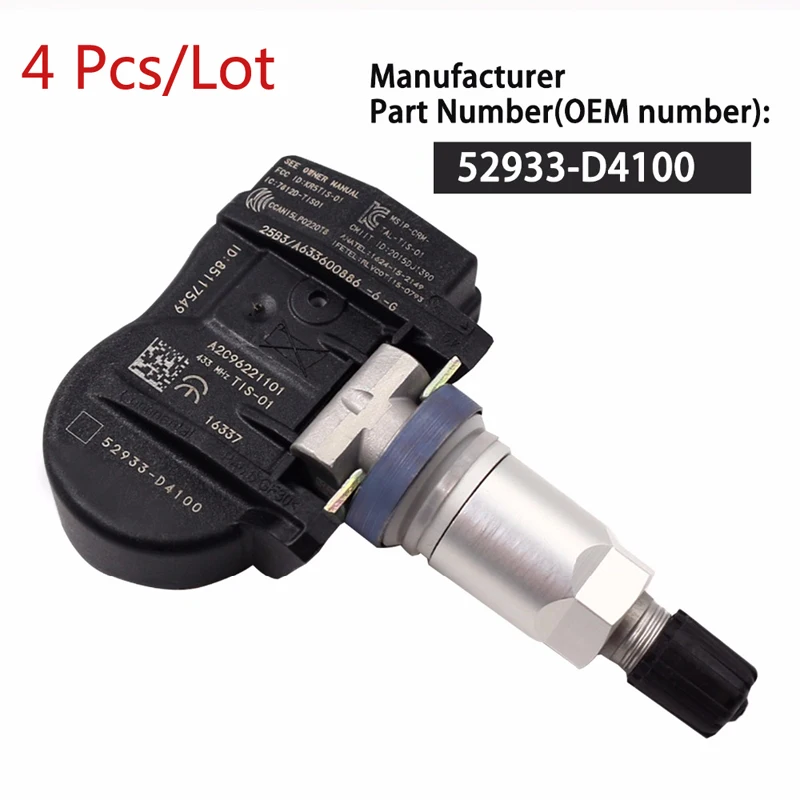 Needs to be repaired pendants.
Needs to be repaired pendants.
High speed cornering. You need to slow down when cornering.
Center tread wear
High tire pressure. If the tire pressure is much higher than normal, intensive wear of the tread in the center of the tire, the grip of the tire with the road decreases coating, the tire does not dampen the bumps in the road, as a result of which all shocks are transmitted on the body and increases the likelihood of tire rupture. Check and correct tire pressure.
In some cases it is necessary to increase the tire pressure, in particular when driving at high speeds or with a heavy load, be sure to bring the pressure to normal during normal operation of the vehicle.
Uneven wear
Front tires may wear unevenly due to misalignment wheels.